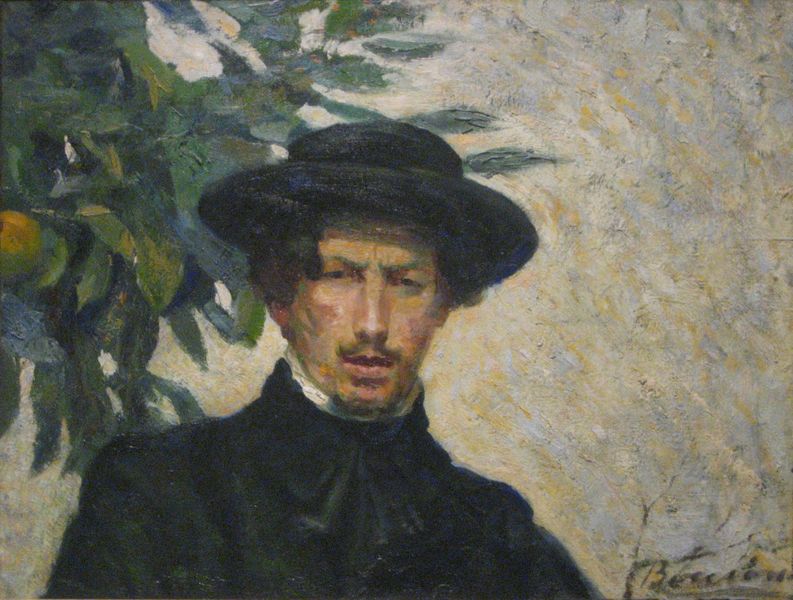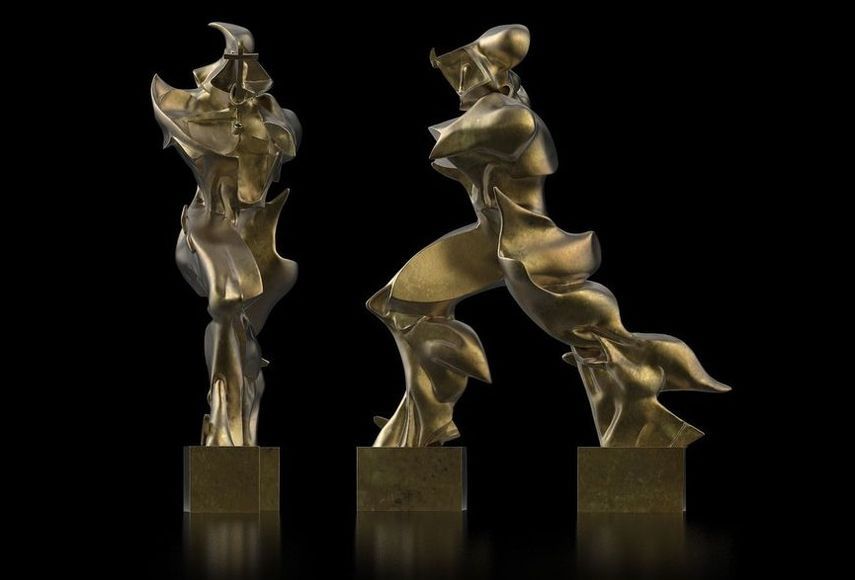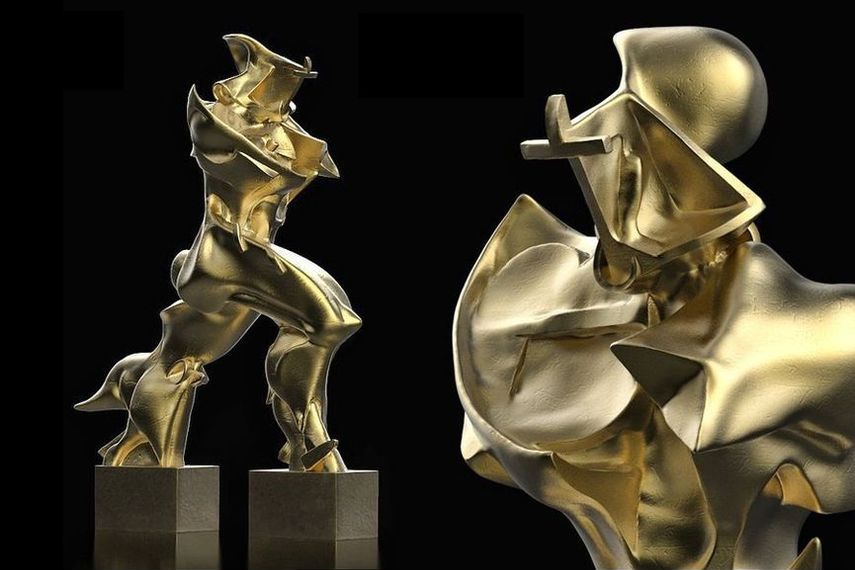Umberto Boccioni s Unique Forms of Continuity in Space is a Work in Which Style
Emerging from the need for breaking off with the past, Italian Futurism was a celebration of technology, power, and modern life. The sculpture Unique Forms of Continuity in Space created in 1913 by Umberto Boccioni is now regarded a masterpiece and an icon of the movement.
Considered at the time of its making to represent the height of achievement when it came to depicting movement through the plastic arts, the piece emphasizes Futurist's celebration of the fast pace and mechanical power of the modern world with its dynamism and energy. The movement itself arose as part of the general artistic ferment that characterized the intellectual life of Europe in the period before 1914. It was the period of spectacular advance of capitalism that brought the new age of progress in which the machine was perceived as a king.
As Italy lagged behind at the time, a group of young artists and intellectuals were frustrated by the country's declining status. Believing that the "Machine Age" would result in an entirely new world order, they were determined to celebrate the industrialization. They sought to capturethe idea of modernity by demonstrating the beauty of the machine and sensations and aesthetics of speed, movement, violence, industrial development, and change. In his powerful piece, Boccioni attempted to capture the idea of the speed and movement of a human figure in space - it is not a unique form, but a unique sculptural rhythm, not the structure of the body, but the structure of the body's action.

The Practice of Umberto Boccioni
Umberto Boccioni worked primarily as a painter, but he also produced drawings, prints, and sculptures. All his work was infused with the energetic movement that referenced the Futurism and the modern machine age. As a leading member of the movement, he was one of the signers of the first two Futurist manifestosin 1910. Futurists regarded the classical marble or bronze sculpture as entirely inappropriate for expressing the modern world and its speed and dynamism.
As Futurism's leading theorist, Boccioni considered the work of other Modernist artists to be mired in what he called "analytical discontinuity", meaning their attempts to show life lacked vitality. Striving to achieve the elusive aesthetic goal of "synthetic continuity", he aimed not to imitate or mimic motion, but to convey the truth of motion through abstract means.[1] In the Manifesto of Futurist Painters in 1910, Boccioni exclaimed: "Let us fling open the figure and let it incorporate within itself whatever may surround it."
In 1912, he wrote the seminal document defining Futurist sculptural concerns, calledThe Technical Manifesto of Futurist Sculpture, writing: "Sculpture should give life to objects by rendering their extension into space palpable, systematic, and plastic, because no one can deny any longer that one object continues at the point another begins, and that everything surrounding our body (bottle, automobile, house, tree, street) intersects it and divides it into sections by forming an arabesque of curves and straight lines." [2]
In an attempt to depict a "synthetic continuity", he created several sculptures between 1912 and 1913. His pieces were primarily concerned with the idea of conveying what he called succession or a series of events.

Unique Forms of Continuity in Space
Boccioni regarded other artists stupid for believing that succession could be achieved through visual tricks, such as repetition or painting from multiple perspectives. He believed that succession should be conveyed by a single abstracted composition, through an"intuitive search for the unique form which gives continuity in space."
Boccioni used that phrase as the title of one of his most acclaimed sculptures, believing it embodied the idea's essence. He created a form that communicates motion by synthesizing the body and the motion it's making into one dynamic three-dimensional form.[3] Having an aerodynamic and fluid form, the pieceUnique Forms of Continuity in Space depicts a human-like figure in motion. The unknown figure strides through space almost appearing in a superhuman fashion. Connected to the ground with two blocks serving as a pedestal, the figure is armless and without a discernible real face.
The contours of this marching figure appear to be carved by the forces of wind and speed as it forges ahead. The shapes and angles of the piece change as one circles the figure. Each perspective is different, making the figuremore ambiguous. The time appears in Unique Forms of Continuity in Space as the fourth dimension of the sculpture, revealing the positional reactions within an evolutionary continuum. Telling a story of hope for the future while also castigating the traditions of the past, the sculpture embodies the urge towards progress and symbolizes the eternal forward march of time.

The Inspiration Behind the Sculpture
Originally inspired by the sight of a football player moving on to a perfectly weighted pass, it is the quintessence of Boccioni's serious, sensuous, philosophically contemplative art. The human figure in motion, the prime element of Western art since antiquity, has been reconceived with stark and stunning originality.[4]
Though Boccioni apparently reviled traditional sculpture, the piece does resemble more realist works. Ironically enough for a Futurism piece, the classical/realism influence in this piece is extremely balanced and proportionate. In the 1910 Futurist Manifesto, Filippo Marinetti, founder of Futurism, wrote:
We affirm that the world's magnificence has been enriched by a new beauty: the beauty of speed. A racing car whose hood is adorned with great pipes, like serpents of explosive breath - a roaring car that seems to ride on grapeshot is more beautiful than the Victory of Samothrace.
Yet, Boccioni's sculpture is quite reminiscent of the ancient classical pieceWinged Victory of Samothrace. Perhaps it was kind of homage, or maybe he was trying to outdo the ancients. The piece also pays homage to Auguste Rodin's Walking Man.

The Legacy
A series of sculptures depicting human forms Boccioni produced between 1912 and 1913, including Unique Forms of Continuity in Space , were cast only in plaster, evidently demonstrating the classic Futurist mentality, being concerned more with ideals than with making something that will last through the ages. Using a delicate and difficult material as plaster, Boccioni emphasized the ephemeral side of the work of art, suitable for that period and without pretensions to transcend time.
Boccioni died young and unnecessarily, in a freak accident during a military training exercise in 1916, never living to develop what he had begun. The acclaimed piecewas never cast into bronze in his lifetime, but fifteen years after his death in 1931. The original plaster cast is displayed at the Museu de Arte Contemporânea in São Paulo, and bronze versions could be seen in theMuseum of Modern Art in New York, theMetropolitan Museum of Art in New York, the Museum of Twentieth Century in Milan, Tate Modern in London and the Kröller-Müller Museum in Otterlo, Netherlands.
Yet, the lightness that was inscribed in the plaster sculpture due to its white color that was purposely left, is lost in the translation in bronze.
After finishing the piece, Boccioni wrote to the critic and owner of Gallerie Futurista of Rome and Naples, Giuseppe Sprovieri: "It is my latest work, and the most free". He also believed that it carried all the necessary characteristics for a truly modern sculpture. Ever since, critics have considered the piece as the maximum synthesis of Boccioni's sculpture production.
Although originally built in plaster, it is its bronze versions, which are predominantly part of the collective unconscious. The metal, rejected by the Boccioni as plastic possibility, emphasizes the Futurist's aesthetics of the machine, however, it is the plaster, allied with the absence of arms, which renders freedom to the body and induces the viewer to focus on projections of the figure bringing a greater perception of motion.[5]
References:
Featured image: Umberto Boccioni - Unique Forms of Continuity in Space (detail), via themetmuseum.com. All images used for illustrative purposes only.
Source: https://www.widewalls.ch/magazine/unique-forms-of-continuity-in-space
0 Response to "Umberto Boccioni s Unique Forms of Continuity in Space is a Work in Which Style"
Enregistrer un commentaire